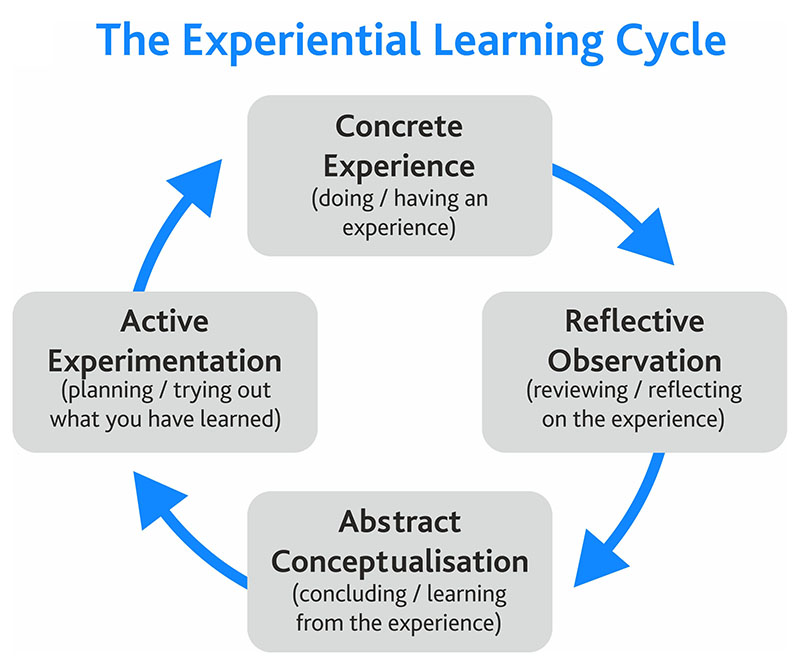Different from traditional education, in experiential learning, students need to develop knowledge and skills from direct experience. Experiential learning not only encourages students to learn by taking action, but also asks them to reflect on and take new action, based on experience. Therefore, it requires self-initiative and self-assessment in learning process. The purpose of experiential learning is not simply to learn a skill or knowledge through practice or hands-on experience, but also to think critically about the experience and learn from mistakes, consequences, and achievements.
The image below demonstrates the Experiential Learning Cycle by Kolb, which also shows the main characteristics of this approach (Experiential Education, 2020):

The Experiential Learning Cycle. Image by “What are Kolb’s Learning Styles and What Do They Mean?”
- Concrete Experience: the learner encounters a new experience or reinterprets an existing experience.
- Reflective Observation: the learner reflects on the new experience and finds the inconsistencies between his/her understanding and experience.
- Abstract Conceptualization: the learner develops new ideas based on experience and reflection.
- Active Experimentation: the learner acts on his/her new ideas by engaging in new experiences.
Based on the Experiential Learning Cycle, I think this approach can apply to our blueprint.
Concrete Experience: the topic of our blueprint is about the basic information of nutrients in our bodies. In the beginning, students will be asked to record their own daily diet and divide their diets into several groups, based on different nutrients. It is the process for them to reinterprets their existing experience.
Reflective Observation: after learning from the content we presented, learners need to reflect on their daily diets and explore the inconsistencies between their daily diets and their understanding.
Abstract Conceptualization: learners will develop new ideas about how to improve their daily diets based on their reflection. In this part, they will also share their ideas and experiences with their peers on online discussion forums and discuss their opinions with them.
Active Experimentation: learners will design and create new daily diet plans based on what they have learned from our project and what essential nutrients they needed.
In my opinion, experiential learning will play an important and necessary role in our Blueprint. Also, this approach can help our learners to be more engaged in learning process, develop new ideas, and have more learning experience and cognitive ability.
References
Image: What are Kolb’s Learning Styles and What Do They Mean? Retrieved from: https://www.skillshub.com/what-are-kolbs-learning-styles/
Experiential Learning Cycle Model (2020). Experiential Education. Retrieved from: https://carleton.ca/experientialeducation/what-is-experiential-education/experiential-learning-cycle-model/
Leave a Reply